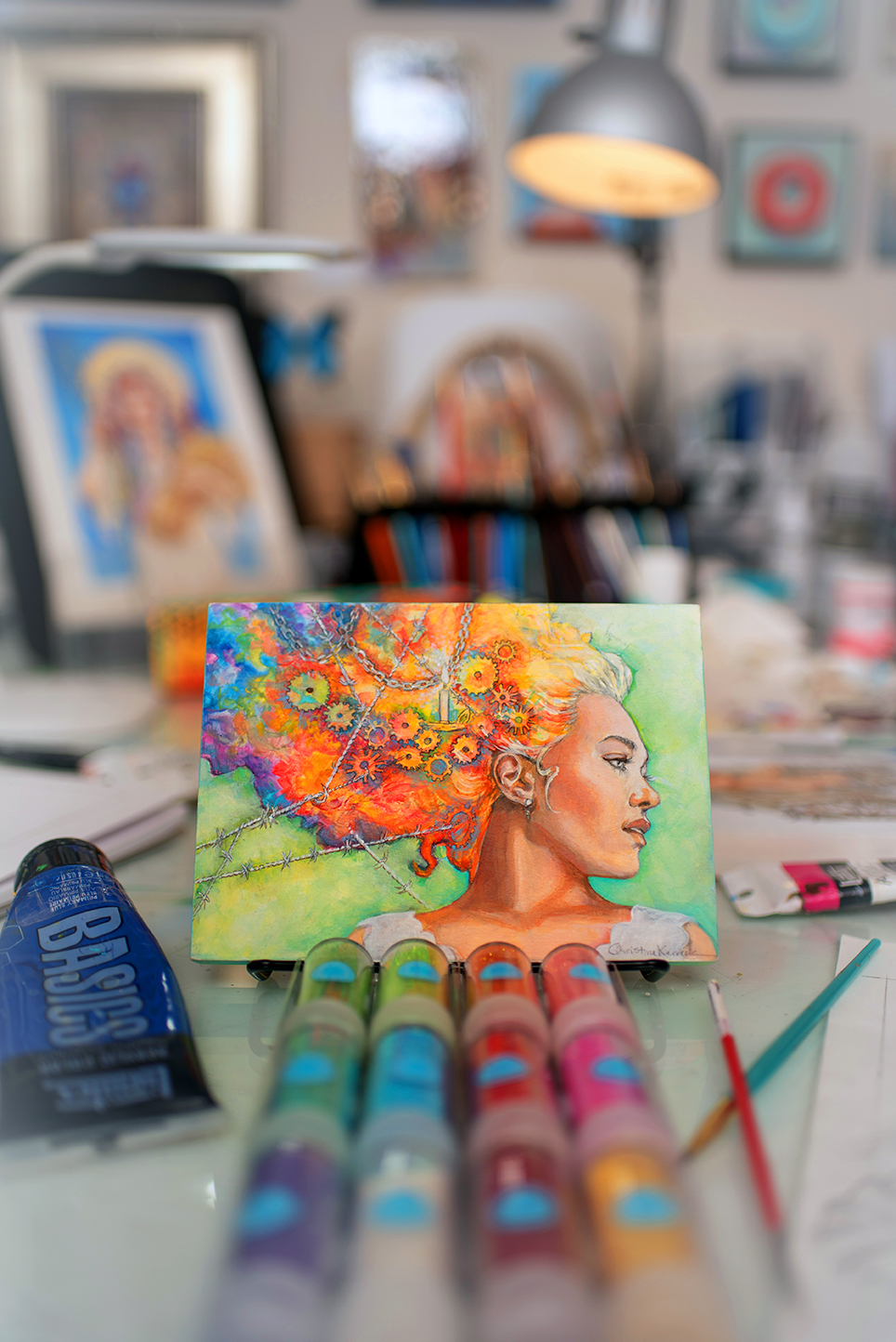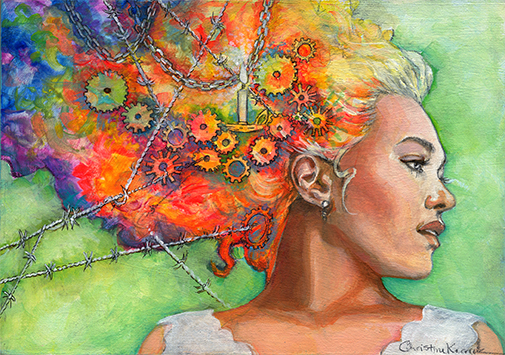
It’s a question every artist has heard before, in some form, when a customer thinks your price is too high.
As artists, we struggle over pricing, changing it and second-guessing our decision even up to show time!
When a customers sees your art and tells you the price is too high, keep this in mind: usually, it’s not the number that’s the issue, but priority. A customer prioritizes buying your art when your story speaks to them; when your art touches them. After that, there’s not much that can keep them apart from that art, which is actually a gem they feel they’ve mined.
You may have gotten the gentle “It’s just not in the budget now” with a sweet smile, or the bolder “Man…” followed by a ‘pssshhhw’ sound, as if they’ve smelled something bad, and then: “That’s too much. Can’t you knock some money off?”.
Both rejections can be difficult, so I’ll speak here to artists and to non-artists, who want to know what goes into an artist’s price:
Someone said it takes 10,000 hours to master something.
For artists, even after we put in that 10,000 hours, we keep going. We are always changing, learning, growing. So what is 10,000 hours? It is:
- 120 hours in a 5-day work week
- 480 hours in a month (using a 40 hour work week)
- 5760 hours in a year (again, a 40 hour work week)
Multiply that year by 2 and you’re just over those 10,000 hours, if you worked just 40 hours a week for roughly 2 years on your art. You’re considered having mastered that art.
But artists don’t stop working at 2 years.
There are added hours for:
- Time in classes and/or college and possibly further education
- Attending and exhibiting at conventions and conferences
- Breakout sessions at conferences, and artist workshops
- Researching not only your technique, materials and the ‘how’ of your art, but researching and learning about each subject you paint. Or, just finding inspiration.
- Attending art shows, participating in art shows (and comicons, and contests, writing grants applications for money, in some cases, auditioning an for art-themed tv show)
- Possibly installing works in customers’ homes
- Freelance and/or commissioned work
- Learning the marketing and financial business of art, along with the losses, mistakes and frustration that goes along with that
- Taking the time to market your art
- Learning how to account for what you make, and do taxes
- Money spent on almost all of the above, and on art supplies
- Creating and maintaining a web site
- Years and years of creating
In the creative process, there are also emotional factors, which also can’t be quantified:
- Hours of time spent creating, only to have it amount to a piece of work you didn’t like
- Dry spells where you couldn’t create anything beautiful if your life depended on it
- Months and maybe longer where your art was just not catching on, but you persevered, knowing someday people would ‘get’ your art and, in turn, ‘get’ you.
- The long, sad hours working a day job which may or may not have to do with art. Both options were just depressing, but you needed the money.
- People who called your art a hobby.
- Standing at those precipices where you wondered if you should be an artist (I’ve done this a couple of times).
- Then, stepping back from the precipice, because yes, art is what you were put on this earth to do.
- Explaining away your fidgety motions during a wedding, concert, lunch or any other place, just wanting to be in your studio doing work, but knowing that you have to come out of the cave and be social, occasionally
Then there are the money factors as you pay for:
- classes
- college (or still paying for college)
- customers who escaped with your work without paying, before you knew to get a deposit, or after you got only a deposit
- studio space (until you realized you could work in your kitchen, with some adjustments)
- show entry fees, tents and other show supplies
- framing costs
- gas and other ‘real life’ necessities
- or sell blood to pay for art supplies (I know people who have done this.)
Artists still make art because it’s a labor of love.
The culmination of that love, at any given time, is that painting which costs $300, or $1200 or $4000. A few last thoughts for customers:
- We artists love you, and love talking to you about our work and what interests you. We just love that you come and look at our work.
- Any painting you see at any given time will never exist again exactly as it is. It is a culmination of hours of work where vision, love, energy and calling intersect to form evidence that artist’s fingerprint: a rare gem indeed.
- Most of us don’t mind splitting payments. If you really want something, ask us if you can do payments. Many of us will say yes!
These points aren’t meant to ‘convince’ anyone to buy art, but to give perspective on what goes into making that work.

